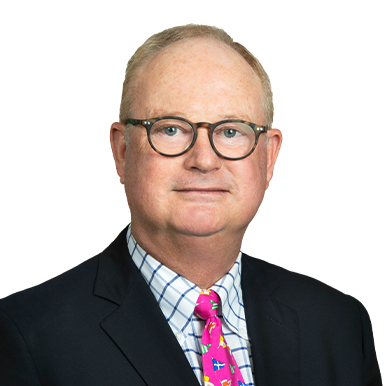The ILS market has become an increasingly important feature in the risk transfer landscape in recent years, and is growing increasingly diverse, encompassing not only catastrophe risks but cyber and other forms of coverage. What it needs now to take it to the next level is a liquid secondary market. Bermuda:Re+ILS reports.
There are many things investors look for when deciding where they should allocate capital. First, they need to believe they will be paid a fair return for the risk involved. They value investments that offer diversification—assets that are not correlated with other things in their portfolios. And they tend to prefer investing in things that are liquid: it is easier to justify investing in something when it is also easy to sell it, should you suddenly need the money for something else.
Insurance-linked securities (ILS) have traditionally offered good returns and offer the diversification element of this in spades. The typical institutional investor will have a portfolio consisting predominantly of stocks and bonds, supplemented by other things such as real estate, commodities and hedge funds. ILS is an attractive addition to these investments, because it should, in theory, have very little correlation with these financial assets.
However, what it has not been able to offer to the same degree is liquidity. Opportunities to sell ILS are limited, meaning investors often buy ILS with a view to holding it to maturity. That is fine for some investors, but to maximise its appeal across the whole spectrum of investors, ILS needs a functioning secondary market.
Transformation
There is a growing movement within the ILS community that understands this and is attempting to rectify it. Brad Adderley, partner at Appleby in Bermuda, says it has the potential to take the industry to a new level.
“A secondary market for ILS will transform the industry. I don’t want to say it will lead to exponential growth, but it will certainly be a real game-changer,” Adderley says.
Adderley explains: “Investors want to know they can access risk and sell their positions quickly if they need to. A liquid market for ILS will drive down the cost of doing business and increase demand.
“The more demand there is, the better the price for issuers, so the more appealing it is to them too.”
“The solution to the problem is enabling a secondary market where collateral can be traded.” Henri Winand, AkinovA
A number of companies are attempting to create this secondary market for ILS. One of them is AkinovA, the insurtech company that became the first to operate in Bermuda’s regulatory sandbox, which encourages innovation by relaxing the rules by which companies must abide, in a safe and monitored environment.
Henri Winand, chief executive officer at AkinovA, argues that regulators should take a lead in creating an environment in which the ILS market can grow, to unleash the new capacity that will bring in the insurance market. To do this, he says, they need to be thinking about how they can promote a secondary market for ILS, and the issues that could arise for trading when ILS collateralise shorter duration policies or instruments which can be re-traded.
“Fundamentally, this is about making it possible for people to trade collateral, which will greatly improve capital efficiency in the re/insurance market,” Winand says.
It will also resolve another problem for investors, he adds.
“Trapped collateral is the bane of the capital markets,” he says. “The solution to the problem is enabling a secondary market where collateral can be traded.”
Adderley argues that there is no need for ILS contracts to be standardised for there to be a liquid secondary market.
“All you need is enough information about ILS so that investors can analyse securities and decide whether they want to buy them. That is one piece that is missing—at the moment investors don’t have access to that information,” he says.
Adderley worries that brokers are inhibiting the emergence of a secondary market. “We need to get the brokers on board,” he says. “Right now they are concerned that more liquidity/electronic platforms will mean lower commissions for them, and they are worried about being squeezed out.
“They need to recognise that liquidity/electronic platforms will grow the market overall. They might get a smaller slice of the pie, but it will be a much bigger pie, so they will do well out of it too.”
Other impediments need to be overcome. “Regulators need to think about how they can be more dynamic around things such as know you customer and credit checking, to make it easier for different kinds of risks to be packaged as ILS, so that capacity in new business lines such as cyber can be increased,” says Winand.
Once these blockages are cleared, the market that has already seen considerable growth in recent years can really take off. That will draw huge amounts of new capital into the industry, allowing re/insurers to write huge amounts of new business, ensuring businesses have unfettered access to coverage in cyber or any other line of business that issuers can think to package into financial securities.
Bermuda is central
Winand believes Bermuda is the obvious centre for trading ILS.
“Bermuda is close to the world’s biggest capital markets: London and New York, in terms of geography and in terms of timezones,” he says.
“That is a big advantage for its ILS market compared to competitors such as Singapore. That said, Singapore itself has an advantage when it comes to proximity to China.”
Adderley agrees. “Bermuda will be at the centre of this market. Everyone markets their cat bonds in Bermuda because this is where the investors are and this is where the largest ILS platforms are,” he says.
“By creating the regulatory sandbox, the Bermuda Monetary Authority has positioned itself as an ally to the business.”
Another obvious potential centre of trading would be London.
“The UK regulator performed very well in 2017 when it set up the initial ILS framework with the industry,” says Winand.
“It has been overseeing sophisticated, collateralised securities and complex capital markets products for a long time. It has struggled to keep up with the specific quirks of the ILS market and of transferring insurance risk, and the way ILS deals are structured.
“Regulators can develop considerable expertise in a particular area, but then, if a key person gets a job in the private sector, a lot of that expertise can be lost. That means regulators can have relatively short memories, so it’s important to work with them to solve problems together over time.”
Wherever it happens, Adderley is convinced that a vibrant secondary market in ILS will emerge—the question is when, not if.
“The world is becoming much more comfortable with technology and with electronic trading,” he says. “Five years ago nobody was thinking about this, but now a number of platforms are working on it, and we will end up with a couple of them dominating the market.”
AkinovA hopes to be the platform on which that trading occurs but, Winand says, it is in no rush to leave Bermuda’s regulatory sandbox.
“It is better to master walking before you try to run, and there are challenges with this new way of doing business that are easier to resolve within the sandbox, by working closely with the regulator and marketplace participants,” he concludes.
Locations
Services
Corporate, Insurance & Reinsurance
Sectors
Insurance & Reinsurance, Technology & Innovation



















